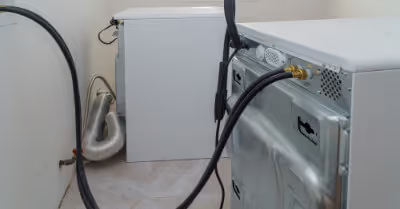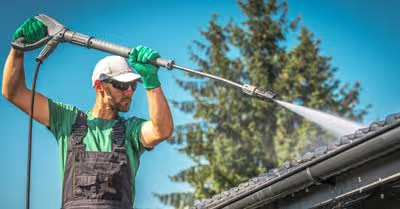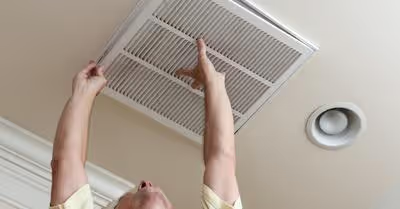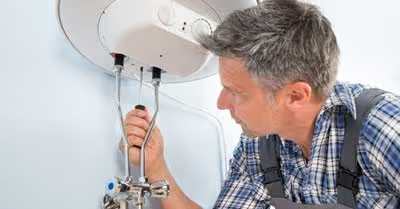Table of Contents
What Causes Bare Spots
Bare spots can be an eye sore and can happen to even well-maintained yards. You could regularly water and fertilize your lawn and still develop bald or dead spots. Lots of things can cause bare spots and it is good to know the underlying cause so you can prevent more of them occurring in the future, especially after you repair them with new grass.
Poor Soil Quality
Good soil is essential to a healthy lawn and, unfortunately, if your soil is the catalyst for bare spots, it is almost impossible to change its condition. This will usually show up as large brown patches.
What you can do, though, is treat it with top-dressing with good quality soil. This can prevent future bare spots while also helping you repair the current ones. You can diagnose this problem by testing the pH of your yard.
Pets
Pets can trample your grass, but the real harm comes from their urine. Their urine burns the grass making a brown patch surrounded by a ring that is green (usually darker green than the rest of the lawn).
It is a good idea to wash urine off when you see an animal using your yard as a toilet, but it is nearly impossible to completely prevent this.
Foot Traffic
Occasionally walking on a lawn doesn’t do any harm, but excessive foot traffic can affect growth and cause bare or bald patches. Constant walking will cause compacted soil which doesn’t let enough air and water into it. This, in turn, causes the grass to suffer.
An aerator can help you prevent compacted soil. You can also choose different types of grass that are more resistant to foot traffic than others.
Drought
Sometimes part of your lawn doesn’t get enough water. This can be due to poor drainage or insufficient sprinkler coverage. You can look at your sprinklers to see if that is the cause. They should cross each other so that the area in between their paths, no matter how small, doesn’t miss out on the much needed water.
You can also use a different type of sprinkler or an irrigation sprinkler to ensure that your lawn doesn’t develop brown spots due to thirst. You could also choose a type of grass that is good for dry climates.
Bugs
Insects and other bugs sometimes cause major damage to an otherwise healthy lawn. They can chew up your grass and cause brown patches. It is pretty easy to diagnose this problem because you will likely see an influx of birds that are hunting down the bugs. You may also see bite marks on the blades of grass.
Grub worms are among the worst types of bugs for your yard. If you have dead patches that lift up easily from the rest of the ground, you probably have too many grubs. They eat the roots, so you will have to eliminate them before repairing your yard.
There are many products on the market that you can use to help eradicate bugs from your lawn. You can use a sufficient supply of water and fertilizers to help prevent them. Frequent mowing will also keep most bugs at bay.
Fungi
Mold and other fungi can kill your lawn. You can often pinpoint this problem because it will gradually kill your grass. Some types also leave behind a webbing on the lawn. Good lawn care will usually prevent fungi infestations. Too much water can create a prime habitat for fungi so make sure you don’t water too much, especially if you live in a rainy area.
There are a lot of types of fungi that could be invading your lawn. Fairy ring fungus will leave a ring, while slime mold or snow mold leave behind a web that is white or yellow.
Thatch
Thatch will develop over time and build up layers. When it gets excessive, your grass will not grow correctly and you can get dead or bare spots. To help reduce or even prevent thatch, fertilize and water your lawn the correct amount. You should also use a mulching mower. It is best to also dethatch your lawn regularly.
Inadequate Mowing
If you do not mow your lawn properly, you can damage your grass enough to cause it to die. This leads to bare spots. Dull mower blades can negatively impact your yard. Additionally, you never want to cut your grass too short.
During the growing season, you should cut your grass once a week. Also remember to sharpen or replace mower blades often.
Chemicals
Pesticides, herbicides, gasoline, and even salt or too much fertilizer can cause dead spots in the yard. Weed killers with too high of a concentration may need to be diluted or you may need to use a different product altogether. If you spill fertilizer, make sure to wash it off with water. Also, use a spreader to apply fertilizer evenly throughout your yard.
How to Repair Bare Spots
There are two methods to repair bare spots in your yard. One method is to reseed the area, the other is to lay grass sod.
Reseeding to Fix Bare Spots
This method is very simple and doesn’t take much time. The downside is that it will take a little while for the patches to disappear because you have to wait for the seeds to germinate and grow.
First you need to rake the area. This will remove dead grass and other debris. A normal rake works fine. Then you will want to use an aerator or cultivator to loosen the soil. It is best to rake and aerate in straight lines, then go back over it a second time going perpendicular to the first lines.
Now you will add a few inches of compost on top. Mix it in gently with a rake. You can use the pole part of the rake to even out clumps and spread it evenly.
Now, use a spreader to spread your chosen type of grass seed. It should cover the surface evenly without ever piling. If you want a fast germinating type, perennial ryegrass is a good choice.
Now, go over the area with a rake again. This will help even out any seeds that are more than one layer thick. It will also mix them into the soil which can help keep them there and protect them from birds and wind.
Now you need to lightly water the area a couple times a day to keep the area moist, but not soaked. Once the grass grows long, you can return to regular lawn care. It may take a couple times before it fully blends into the existing grass.
Laying Sod to Fix Bare Spots
If you want your bare spots covered with grass quick, sod may be the best choice. Most hardware and home improvement stores will cut them for you, but you can cut it with a garden knife too. It should be about 2 inches over the edge of the bare spot in every direction.
Place the patch of sod over the bare spot and use a shovel to trace the edges into the healthy grass around the edges. Then remove the sod and use a cultivator to remove any thatch, dead grass, or debris. You should also loosen the soil. Remove a layer of soil so that the sod will lay down flat. It should sit at the same level as the healthy grass around it.
Now, walk on the patch of sod to compress it down. You should water it and continue to water it 2 to 3 times every day for around 5 days. When you see that the sod is bonding to the grass around it and it is growing, you can return to regular lawn maintenance.
Recent Articles
















